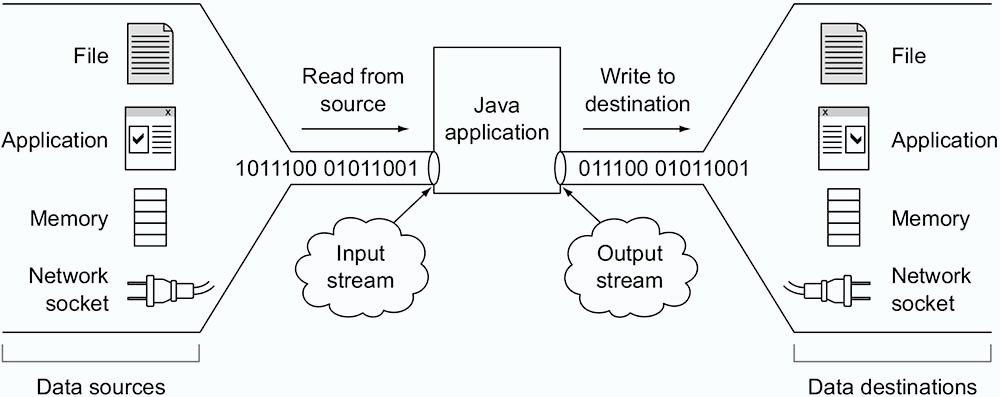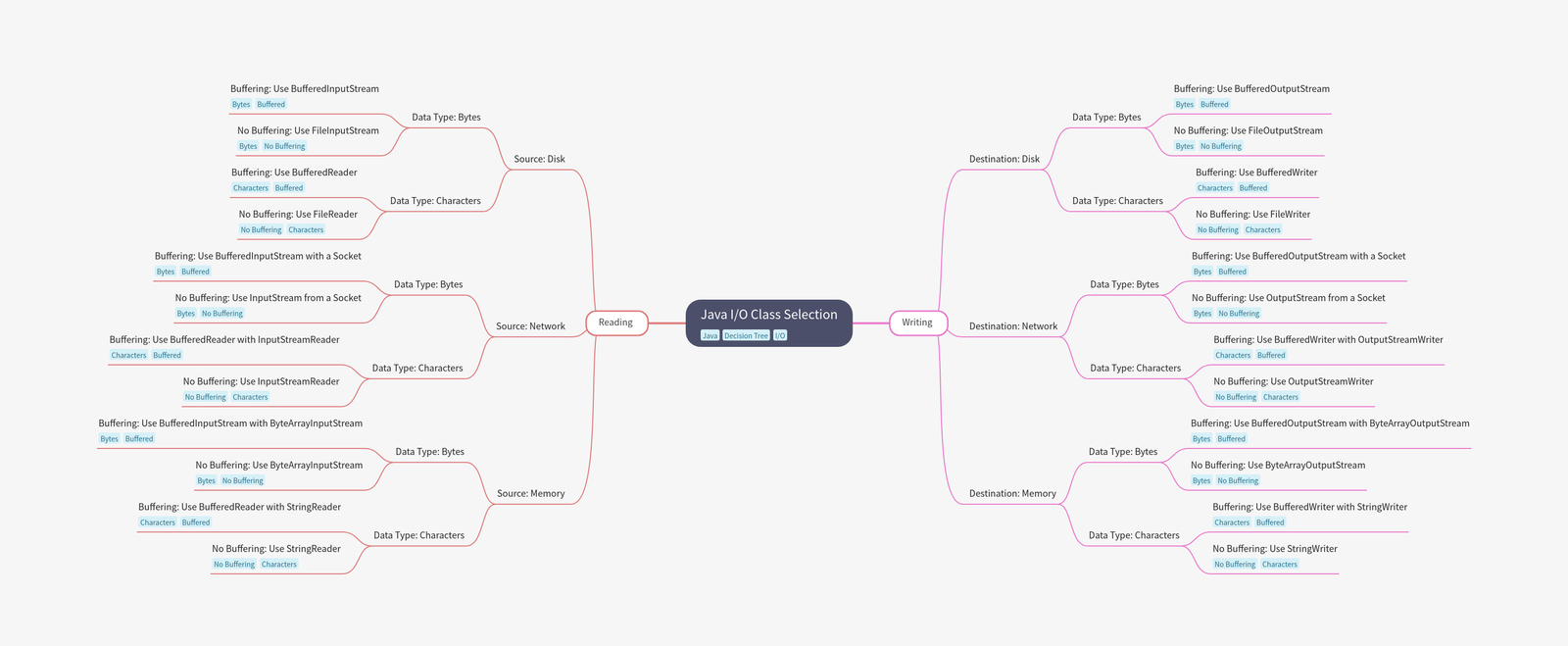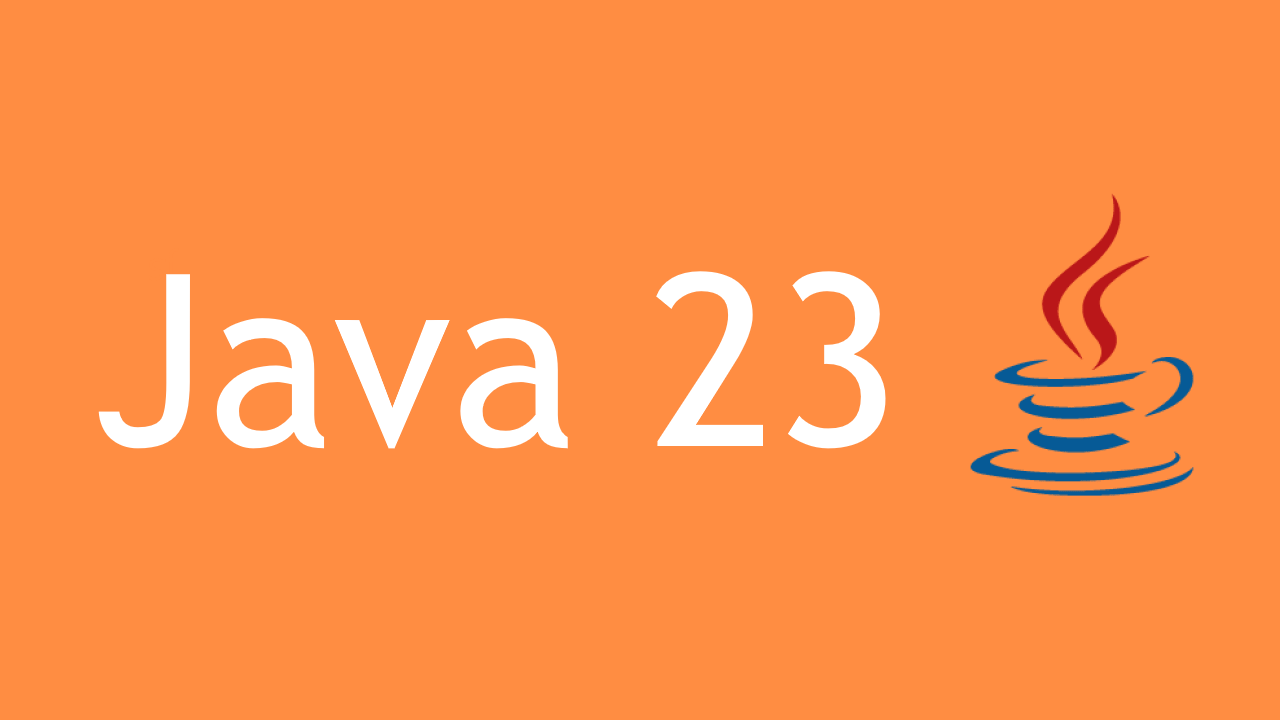Java I/O is a critical component of the language, enabling the handling of input and output operations from a variety of sources like files, network connections, and other data channels. It’s designed to be both powerful and flexible, offering a wide range of classes and methods to meet different I/O needs. Whether you’re working with raw bytes, complex data structures, or anything in between, Java’s I/O system provides the tools necessary to interact with data efficiently and effectively. In this article, we’ll take a deep dive into the mechanics of Java IO, explore the design decisions behind it, and understand how Java’s I/O architecture supports diverse and complex applications. In order to have a good understanding of how IO in java is designed, we will have to explore some fundamental concepts, the main and the first one is Streams, be aware that Java IO adopted this concept since its early versions and this is not a thing to mix with Stream API introduced in Java 8, so let’s start with first things first.
What is a Stream in Java IO?
In Java, a stream is a sequence of data elements available over time. Think of it as a pipeline, through which data flows from a source (like a file, keyboard, or network socket) to a destination (like your application or another file).
Java handles two types of streams: Input Streams and Output Streams.

- Input Stream: Used to read data from a source.
- Output Stream: Used to write data to a destination.
The concept of streams in Java has for goal, to unify and standardize how programs perform I/O operations . Streams gives a consistent and easy-to-use interface for data flow, regardless of the underlying source or destination.
Abstractions of Streams
Streams abstract the process of reading from and writing to different I/O devices, making it easier to work with data without worrying about the specifics of the underlying hardware. This design choice aims to simplify the complexity of interacting with various data sources and sinks, allowing developers to focus on the logic of data processing rather than the intricacies of device management.
- File Streams: The OS interacts with the filesystem to fetch data from or write data to files. File descriptors or file handles are references to open files.
FileInputStream fileInputStream = new FileInputStream("example.txt");
// File descriptor for "example.txt" is obtained by the OS- Network streams send and receive data over network connections using sockets. The OS manages the network interfaces and handles the low-level protocols, such as TCP/IP :
Socket socket = new Socket("example.com", 80);
InputStream networkInputStream = socket.getInputStream();- Device Streams: For devices like keyboards or printers, the OS communicates with hardware drivers that manage the device-specific protocols:
InputStream keyboardStream = System.in;
int key = keyboardStream.read(); // Reading from the keyboardThe key point here is that while Java’s stream API provides a high-level, unified interface, the underlying operations closely tie to how the OS manages and interacts with different hardware and software resources.
The decorator pattern:
Java’s I/O system emphasizes flexibility, largely because it uses the Decorator Pattern. This design pattern lets you wrap objects to add additional behavior.

In the realm of byte streams, classes like BufferedInputStream, DataInputStream, and CheckedInputStream serve as decorators that enhance the functionality of basic InputStream classes. The ability to chain these decorators together means you can tailor your I/O operations to specific needs without altering the underlying code.
Example: Chaining in Byte Streams
Suppose you need to read bytes from a file, buffer them for efficiency, and also validate the data integrity using a checksum. With the decorator pattern, you can achieve this by chaining several I/O classes:
try (CheckedInputStream checkedInputStream = new CheckedInputStream(
new BufferedInputStream(new FileInputStream("example.bin")),
new CRC32())) {
int byteRead;
while ((byteRead = checkedInputStream.read()) != -1) {
// Process each byte
}
long checksumValue = checkedInputStream.getChecksum().getValue();
System.out.println("Checksum: " + checksumValue);
} catch (IOException e) {
e.printStackTrace();
}In this chain:
FileInputStreamhandles reading raw bytes from a file.BufferedInputStreamadds a buffering layer to reduce I/O operation overhead.CheckedInputStreamcomputes a checksum to ensure data integrity.
Each decorator adds a specific capability, allowing you to create a robust and efficient I/O operation by simply stacking these decorators, in the following example we can do store data after reading it from a source and after compressing and encrypting it:

This modularity and flexibility are why Java’s I/O system is so effective, particularly in scenarios requiring byte-level data manipulation. You can mix and match these decorators as needed, offering a high degree of customization without the need to modify the core functionality.
Blocking Nature of I/O:
One of the key characteristics of Java I/O streams is that they are blocking by nature. When a thread performs a read or write operation, it waits until the completion og the operation before continuing. This blocking behavior ensures data integrity and simplifies programming by providing a straightforward flow of control. However, it can lead to performance bottlenecks in situations where non-blocking I/O might be more efficient, such as in high-performance server applications. Java’s later introduction of NIO (Non-blocking I/O) addresses these scenarios.
Getting started with Java IO API
The InputStream class in Java is the foundational class for reading byte-oriented data from various input sources such as files, network connections, or even byte arrays. It provides several methods for reading data, with the most common being read(), which reads the next byte of data from the input stream and returns it as an integer value between 0 and 255. If no byte is available because the end of the stream has been reached, read() returns -1. The InputStream class also includes methods like read(byte[] b) to read multiple bytes at once, and close() to release any resources associated with the stream :
int byteData;
while ((byteData = fileInputStream.read()) != -1) {
System.out.print((char) byteData);
} Hello, World! // If the file contains this textWhat Happens During read()?
Let’s consider the InputStream class, specifically the read() method. When you call read(), which returns a single byte, there’s a lot happening behind the scenes:
- System Call:
Whenread()is invoked in your Java program, it typically results in a system call to the operating system. The system call, usually named something likereadorrecvdepending on the OS and the source, instructs the OS to fetch the next byte of data from the specified input source (e.g., a file on disk).
Code Example:
FileInputStream fileInputStream = new FileInputStream("example.txt");
int data = fileInputStream.read(); // This triggers a system call to read the first byte
System.out.println("Byte read: " + data); Byte read: 72 // Assuming the first byte in example.txt corresponds to 'H'- OS Buffering:
The operating system manages I/O operations using buffers, small chunks of memory allocated to temporarily hold data. When you read a byte, the OS may already have several bytes in its buffer from previous operations. If the buffer is empty, the OS will fetch the next chunk of data from the physical device, such as a hard drive. - Data Transfer:
The byte is then transferred from the OS buffer to the JVM (Java Virtual Machine). This process is usually very fast if the data is already in the buffer; otherwise, it may take some time due to the need to read from a slower physical device. - Returning the Byte:
Finally, the byte is returned to your Java program, where you can use it for further processing. If the end of the stream is reached, theread()method returns-1to signal that there’s no more data to read.
InputStream usage pattern
Typically, an InputStream is used in a try-with-resources block to ensure that the stream is closed automatically, which helps prevent resource leaks. The most basic pattern involves reading data in a loop until the end of the stream is reached, indicated by the read() method returning -1. This pattern allows for processing each byte as it is read or storing it in a buffer for further manipulation.
Code Example:
try (FileInputStream fileInputStream = new FileInputStream("example.txt")) {
int data;
while ((data = fileInputStream.read()) != -1) {
System.out.print((char) data);
}
} catch (IOException e) {
e.printStackTrace();
}Expected Output:
Hello, World! // Reading the content of example.txtIn our upcoming articles, we’ll explore more about Java I/O, diving deeper into the nuances of streams, readers, and writers, and how to use them effectively in different scenarios. Stay tuned for more insights on optimizing your Java I/O operations for different use cases!
Subscribe to the newsletter for the upcoming parts and for all the updates !






Leave a Reply